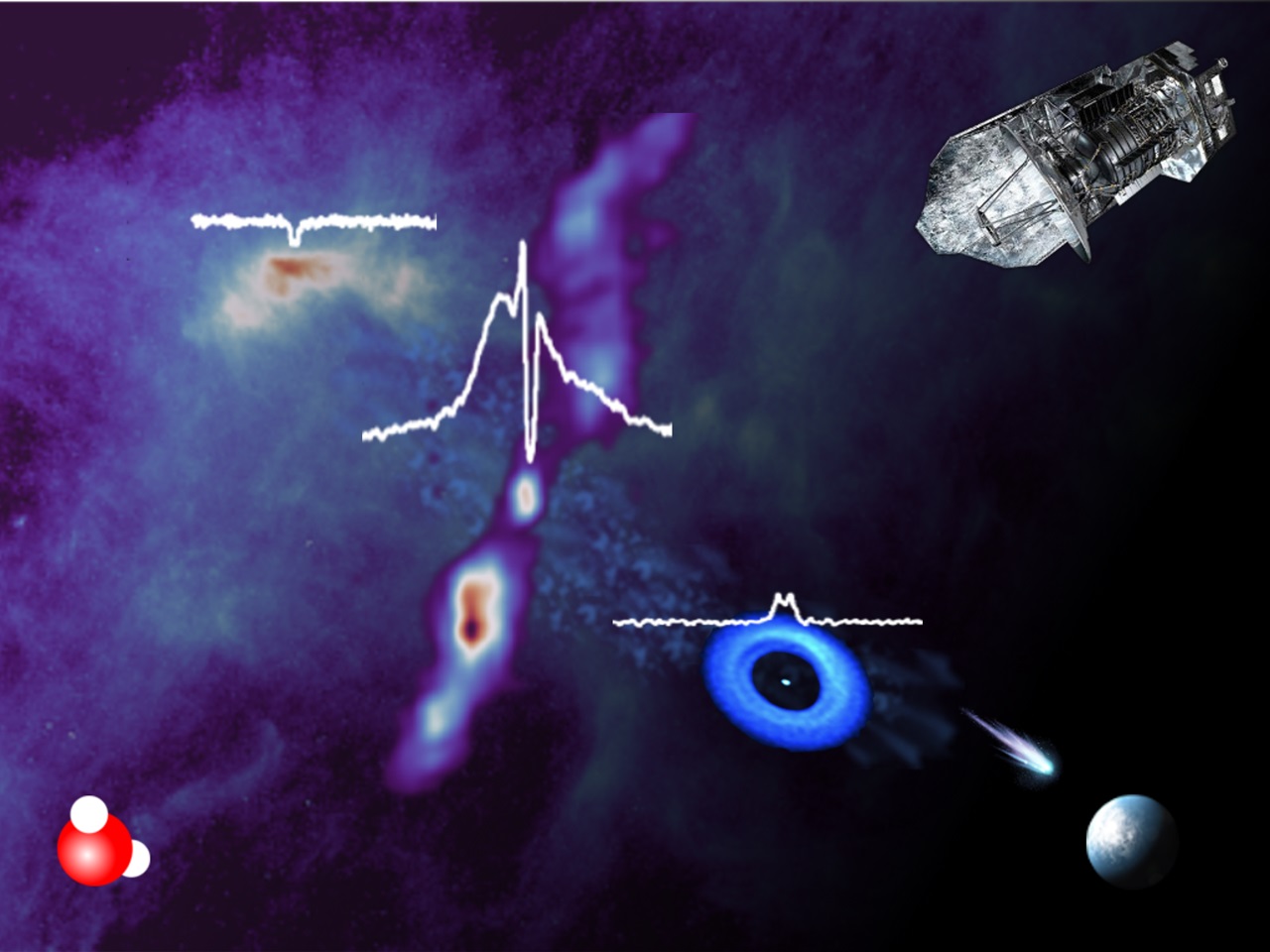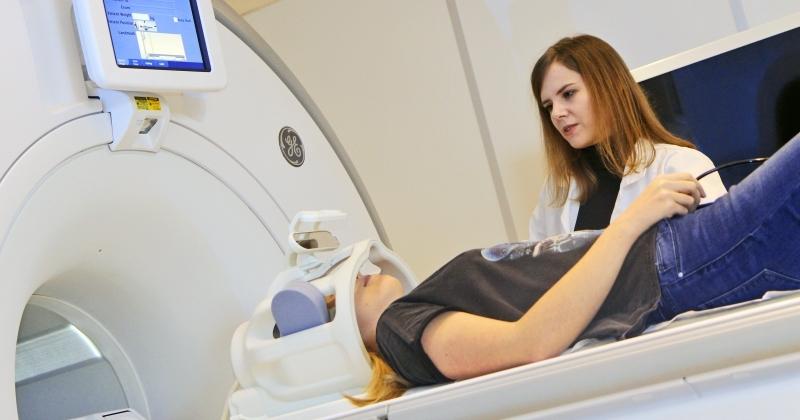 Exact sciences
Exact sciences
Journey of water in space
Dutch astronomer Ewine van Dishoeck (Leiden University, the Netherlands), together with an international team of colleagues, has written an overview of everything we know about water in interstellar clouds thanks to the Herschel space observatory. The WISH team member is Dr. Agata Karska from Nicolaus Copernicus University in Toruń.
The article, published in the journal "Astronomy & Astrophysics", summarizes existing knowledge and provides new information about the origin of water on new, potentially habitable, worlds. The article is expected to serve as a reference work for the next twenty years.
Long-awaited review reveals journey of water from interstellar clouds to habitable worlds
How and where water is formed in interstellar space and how it eventually ends up on a planet like Earth was not well understood ten years ago. One reason for this is that observations made with ground-based telescopes are affected by water vapour in our own atmosphere. In 2009, ESA launched the far-infrared space telescope Herschel. One of Herschel's main goals was to research water in space. Herschel was in service until 2013. Of particular importance was the HIFI instrument built under Dutch leadership, also known as the "molecule hunter". In recent years, dozens of scientific articles have been published based on Herschel's water data. Now these results have been combined and expanded with new insights.

(c) ESA/ALMA/NASA/L.E. Kristensen
The new study describes the journey of water throughout the star formation process, including the intermediate stages which , until now, had received less attention. The paper shows that most of the water is formed as ice on tiny dust particles in cold and tenuous interstellar clouds. When a cloud collapses into new stars and planets, this water is largely preserved and quickly anchored into pebble-sized dust particles. In the rotating disc around the young star, these pebbles then form the building blocks for new planets.
Furthermore, the researchers have calculated that most new solar systems are born with enough water to fill several thousand oceans.
It's fascinating to realise that when you drink a glass of water, most of those molecules were made more than 4.5 billion years ago in the cloud from which our sun and the planets formed - explains Ewine van Dishoeck.
Many of the earlier Herschel results focused on the hot water vapour that is prominently seen and copiously produced near forming stars. But that hot water is lost to space by the powerful outflows from the young star.
Nevertheless, water which is lost plays an essential role in understanding the physical processes occurring around young stars. Dr Agata Karska (Nicolaus Copernicus University in Toruń, a WISH team member) and her colleagues have shown that hot water is ubiquitous around protostars (Karska et al. 2018, ApJS, 235, 30). She associated the presence of hot water with 'sunbathing of protostars', or the illumination of gas in molecular outflows caused by ultraviolet radiation. Such energetic radiation is not emitted by young stars, like our Sun in the past, and the presence of such radiation was postulated only in the vicinity of massive stars.
Whilst writing the review, the researchers gained more and more insight into the chemistry of the cold water vapour and ice. For example, they were able to show that interstellar ice grows on dust particles layer by layer. They based this conclusion on the weak signals from heavy water (HDO and D2O instead of H2O).
In the future, researchers hope to be able to study more water in the universe, particularly in forming planetary systems. However, that might take a while. The next space telescope comparable to Herschel is planned to launch no earlier than 2040.
There was a chance that a "water telescope" would go into space around 2030, but that project was cancelled. That is a pity, but it was an extra reason for our team to write the water overview. In that way we have a collective memory for when a new mission comes along - says Ewine van Dishoeck.
Moreover, at the end of 2021, the James Webb space telescope will be launched. It will contain the MIRI instrument, built by European-US partnership, which will be able to reveal a part of the water roadmap that has remained out of reach until now. MIRI will be able to detect warm water vapour in the innermost zones of dust disks.
Herschel has already shown that planet-forming disks are rich in water ice. With MIRI we can now follow that trail into the regions where Earth-like planets are formed - explained co-author Michiel Hogerheijde (Leiden University and the University of Amsterdam).
The ALMA telescopes in Chile can observe water vapour in space from the ground. This includes water in distant galaxies where the water lines have shifted away from those in the Earth's atmosphere.
- Thanks to Herschel's legacy, we can interpret these ALMA data much better - adds co-author Lars Kristensen, (University of Copenhagen, Denmark).
About the Herschel space telescope
Herschel was a space telescope of the European Space Agency (ESA) built in cooperation with the NASA. Its HIFI and PACS instruments were used for the water research. HIFI was designed and built by a consortium of institutes and university departments across Europe, Canada, and the United States under the leadership of SRON Netherlands Institute for Space Research, the Netherlands, with major contributions from Germany, France, and the USA. The PACS instrument was developed by a consortium of institutes and universities across Europe led by the Max Planck Institute for Extraterrestrial Physics in Germany. Ewine van Dishoeck led the water research in the WISH programme (Water in Star-forming regions with Herschel).
 NCU News
NCU News







 Exact sciences
Exact sciences

 Exact sciences
Exact sciences